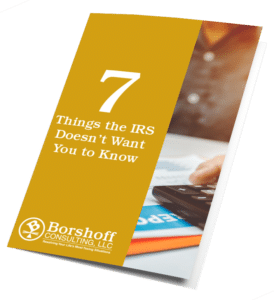If you receive a pension as part of your yearly income, it is essential to know how to report those earnings to the IRS and pay taxes on them. If you forget or neglect to do this, you could land in some trouble with the IRS, leading to fines and other possible penalties.
These types of taxes are strictly enforced, and as such, you can expect the IRS to know if you aren’t paying up. Additionally, you can also expect them to take action against you for not paying or paying less than you’re supposed to.
If you have a pension and are unsure whether it is taxable income or not, it is best to consult a tax professional for help. In the meantime, however, this article will do its best to explain what a pension is, which pensions are taxable, and how you can correctly report and pay those tax bills.
What is a Pension?
A pension plan is a form of retirement plan set forth by an employer/employee agreement. Throughout the employee’s tenure at the pension-paying company, the company will set aside a predetermined amount of money on the employee’s behalf to be paid to them throughout their retirement.
For some companies, the pension amount is completely company-funded. For others, the work contract also allows the worker to voluntarily set aside a certain amount of their earnings into the pension account each pay period in addition to the employer contribution.
Once the employee retires (given that they have fulfilled any and all requirements laid out in the work contract to receive their benefits), that money is then paid out in a series of pension payments.
In general, there are two types of pension plans:
Defined-Benefit Plan
Defined-benefit plans are essentially guaranteed payment plans that hold the company liable for payments regardless of the investment pool.
With this type of plan, the company is responsible for paying out a certain amount to the employee regardless of how much was paid into the account. If the amount being paid out is greater than the amount paid in, the company is responsible for making up the remaining balance.
Defined-Contribution Plan
A defined-contribution plan describes retirement benefits where the employer pays a certain amount to the employee’s pension plan based on a percentage of what the employee pays in.
With this plan, employer liability for the program ends when that percentage is submitted to the pension account. The most well-known type of defined contribution plan is a 401(k) plan.
Is My Pension Taxable?
For those who receive pension benefits during retirement, you can expect to be subject to at least some sort of taxation. This happens because most pension funds are placed into the account before taxes are applied, meaning the IRS doesn’t see those funds until they are being paid out to you during retirement.
The biggest determiner as to whether your pension will be partially or fully taxable is whether you contributed funds to it. For example, if you did contribute funds, you’ll likely be subject to fewer taxes than someone who didn’t, as part of the pension funds would already have been taxed when you paid in.
As a general rule, you will be responsible for making both federal and state tax payments on pension funds contributed using pre-tax dollars, but not for those using after-tax dollars.
How Much Tax Should I Be Paying from My Pension?
Tax law dictates that, as with all income, pension income should be taxed according to the IRS-established income tax rate and your tax bracket. This means that you can be taxed on your pension dollars anywhere from 10-37%.
Naturally, those relying solely on pension funds to live in retirement would pay less (depending on the pension payments) than someone who is receiving a pension, plus investment income, social security benefits, etc.
Additionally, the amount you pay in taxes also depends on how much you receive from your pension at once. For example, if you are receiving periodic payments, you are only responsible for paying taxes on the amount you receive that year.
However, should you withdraw a lump sum, you are responsible for paying taxes on the entire amount withdrawn whenever you file your taxes for that year.
To help determine how much you should be paying in taxes, the IRS Tax Withholding Estimator should help.
How Can I Avoid Taxes on a Lump Sum Payout?
For most employers, it is a requirement to withhold twenty percent of the lump sum you take with you when you leave their company. If you would like to avoid taking that tax hit, however, you do have options.
You can, for example, roll over the funds from your pension account to an IRA or another similar plan. A rollover is tax-free because you aren’t withdrawing any money, and it will ensure you aren’t being taxed unnecessarily on your retirement income.
How Can I Pay my Pension Taxes?
Luckily, when you start a pension, you can opt-in to have federal and/or state taxes automatically withdrawn from your pension payments. However, you do have to select how much you believe should be taken out.
Naturally, you don’t want to select too little because then you’ll have to pay money when you file your tax return that year. Similarly, you don’t want to pay too much and have a massive return as you will be lending quite a bit of money to the United States government.
To determine what should be taken out, simply use the withholding estimator mentioned above for an accurate estimation.
Conclusion
Pension tax reporting is often complicated and confusing, as many are not clear on how much they should be paying at any given time. Luckily, there are professionals out there who can help.
At Borshoff consulting, we perform reliable, in-depth tax consultations for individuals unsure what they should be paying and when. Through this service, we help you avoid unnecessary penalties and IRS action so you can spend your money worry-free.
Let Indiana’s tax expert point you in the right direction with your pension income!





